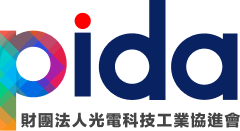
|
|
專訪穩懋半導體股份有限公司/總管理處/總經理/陳舜平先生
良好的技術開發能力 造就代工廠的成功關鍵
穩懋半導體成立於1999年,位於林口華亞科技園區,是全球首座以六英吋晶圓生產砷化鎵微波積體電路(GaAs MMIC)的專業晶圓代工服務公司。穩懋擁有完整的技術團隊及最先進的砷化鎵微波電晶體及積體電路製造技術及生產設備,客戶群除了全球射頻積體電路設計公司(RFIC Design Houses)外,並致力吸引與全球整合元件製造(IDM)大廠合作。在製程技術發展方面,穩懋以多元化及領先為原則,期能提供客戶最完整的服務。在無線寬頻通訊的微波高科技領域中,穩懋目前提供兩大類砷化鎵電晶體製程技術:異質接面雙極性電晶體(HBT)和應變式異質接面高遷移率電晶體(pHEMT),二者均為最尖端的製程技術。在光通訊及3D感測領域中,穩懋更以MMIC生產技術為基礎,提供光電產品的開發與生產製造。
良好的技術開發能力 是純代工廠的成功關鍵 總經理陳舜平表示,穩懋的策略是不涉入設計,是家百分之百純代工的晶圓代工廠,因此,良好的技術開發能力,就是公司追求的重要目標;公司從過去營業額幾十億元,發展至目前的幾百億元,研發費用占營收比重逾5%;研發能量的規模一直在擴大增長中,由於技術的投資需要時間和資源,也因此,長期累積下來,公司的技術能力是很強的,也是超越同業的重要關鍵。穩懋目前在全球晶圓代工產業的市場占有率約6~7成。重要客戶幾乎都是國際上一線的通訊大廠。 穩懋以對技術的重視,取得客戶的信任;陳舜平舉例說明,公司於2007年進入手機PA的領域,從那時開始,公司在此領域的資源投入,就持續不斷。和客戶的合作,十幾年來,已從iPhone 4S到iPhone 16了;他說:我們的客戶透過公司生產給他們的化合物半導體晶圓,一直都是在產品裡占了非常大的比重。客戶和穩懋的這種合作已經十幾年了,關係很緊密,甚至後來客戶將自己在美國的廠房關掉,直接讓穩懋替它們生產和開發技術。這種和客戶緊密的互動關係,也形成了競爭者很難跨進來的門檻。 對寬頻無線通訊及光通訊的未來規劃 陳舜平指出,要談寬頻無線通訊,可先從了解化合物半導體說起;後者本來在高頻特性上,就是比矽半導體來得優秀非常多,未來無線通訊、有線通訊、光通訊等方面,化合物半導體都會扮演非常重要的角色。例如:無線通訊上的GSM、5G、6G,對頻率的需要一直在往上拉高;頻率越高對化合物半導體來講,就會更凸顯它在材料特性上,優於矽半導體。在未來6G、衛星通訊上的無線通訊,化合物半導體將會扮演一個更重要的角色。因為,整個通訊的世代演進,都會把頻率持續的往上拉高,頻率拉高就會對應到化合物半導體材料的特性上,凸顯它優異的地方。 至於要了解光通訊之前,先知曉矽半導體它是不會發光的,所以談到光纖通訊、矽光子,不管最後矽半導體扮演多大的角色,最重要的雷射光源,最後仍是需要化合物半導體來產生。誠如所知,光通訊的發展,在AI發展越來越普及的情況下,整個Data Center的重要性越來越高的狀況下,高速的運算所需要帶來高速大量資料的傳輸量,隨之越來越大;因此,光纖通訊在此扮演的角色就很重要。連帶地,化合物半導體在雷射光源裡就會扮演更多重要的角色。 投入矽光子發展計畫及AI的想法 近期產業間興起的各種矽光子發展計畫、及AI發展,穩懋都不會缺席。陳舜平說,以矽光子而言,今(2024)年成立的矽光子聯盟,公司就是創始會員之一。我們也在思考,如何將矽半導體和雷射光源做更好的整合;公司秉持過去20幾年在化合物半導體的技術和經驗累積,將提供更多更好的技術發展建議。也就是說,穩懋將在矽光子的開發研究等各種發展上,投入更多的心力。 至於AI的發展也一樣,它對公司最重要的就是資料傳輸部分。陳舜平表示,公司內部有AI專業人才,例如IT部門就有AI專業人才的配置,製造部門也有AI專業人才的幫助。 陳舜平指出,未來發展對算力的需求越來越大,各種大型運算中心無時無刻需要接收很多資料來做運算,它們之間伺服器資料的傳輸,速度就必須更快,矽光子是因為在這種需求下而產生的。也因此,有公司認為由於要運用到很多運算,GPU之間的互相連接要用到更多的光通訊,這種狀況下,未來AI的運算,將更有效率的提升。 企業文化重視誠信、當責、前瞻與創新 穩懋表示,公司重視的企業文化首推「誠信」,在對內部員工的管理,及對外部客戶的服務都一樣重視;以對外而言,希望公司製做出來的產品,都能令客戶滿意,建立客戶對穩懋的信任。 當責,即是鼓勵內部員工們,凡事都能多做一點兒;當責是比負責更進一步,主動多做一些事;當跨部門合作時,每個部門完成自身任務之後,不同部門之間會有一些縫隙的灰色地帶,鼓勵大家主動去補足未做完善之事。此為當責的精神。 至於前瞻和創新,即是本份事。穩懋作為一家技術服務公司,任何時刻,都要比客戶及競爭者,對未來看得更遠、更具各種創新能力,此為成功的重大要件。 .PNG) 圖說:穩懋半導體(股)公司/總管理處/總經理/陳舜平先生
|
